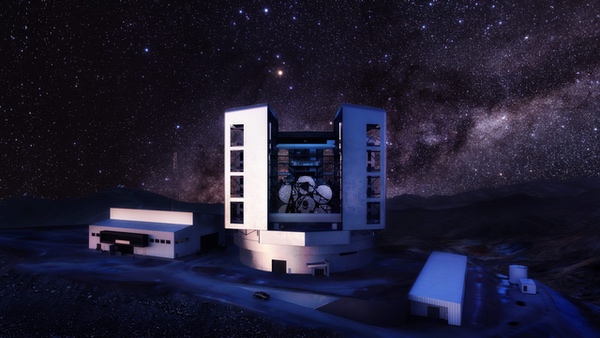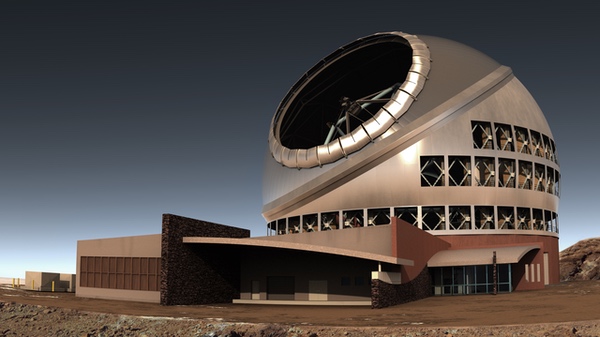
Squinting at the universeby Jeff Foust
|
| “The purpose of the START team is really to start looking at the science trades, both on the habitable worlds side by also on transformational astrophysics,” said Clampin of one of the HWO committees. |
The strong interest in JWST is a vindication of the design of the telescope and its scientific utility after a developing that ran far behind schedule and far over budget. But even as JWST hits its stride, scientists and engineers are starting the planning for a future large space telescope, the Habitable Worlds Observatory, or HWO, projected for launch in the 2040s (see “Unlocking the next great observatories”, The Space Review, January 16, 2023.)
Over the last year, NASA has devoted its attention on the process by which the requirements and design of HWO will be defined. That included establishing two committees, called START and TAG. START, or Science, Technology, Architecture Review Team will develop science objectives for the telescope and the instrument capabilities needed to achieve them. TAG, or Technical Assessment Group, will study architecture options for the telescope and risks associated with them. Those committees will be supported by working groups open to scientists and engineers beyond those formally part of the committees.
“The purpose of the START team is really to start looking at the science trades, both on the habitable worlds side by also on transformational astrophysics,” said Mark Clampin, director of NASA’s astrophysics division, in an interview in January just after a meeting of the American Astronomical Society (AAS). While the primary goal of HWO is to study potentially habitable exoplanets, as the name suggests, Clampin and others have emphasized that the telescope is also intended to perform a wide range of other observations.
“They’re getting us on the path towards understanding some of the key science trades that we have to make for all of the science programs, and then bringing in the TAG teams to help us understand the implications for the further potential architecture that we may ultimately end up with,” he said of the work of START.
While the START and TAG are separate committees, they are working together, including a joint meeting planned for next week in Pasadena. “They are going to look at the trades and produce document that provide us with trades, so that, later on when we start doing formulation, it’s easier to get to the science requirements as we start to develop a working architecture.”
During a session of the AAS meeting in New Orleans, representatives of the START and TAG teams and the overarching Great Observatory Maturation Program, or GOMAP, discussed the plans for those committees’ efforts. That includes advancing the “concept maturity level”, analogous to the widely used technology readiness level system, of HWO over the next couple years.
The goal for the next year, said Megan Ansdell, GOMAP-HWO project scientist at NASA headquarters, is to reach concept maturity level 3 on a one-to-five scale. “In short, that phase getting to the point where we have identified all the trade spaces that are going to impact mission decisions down the line, and we’ve also figured out how to explore those trade spaces,” she explained.
| Illustrations of HWO are only notional now, said O’Meara. “I have no idea what the observatory looks like.” |
“We are not making decisions on what the observatory will actually look like and be,” said John Ziemer of JPL, one of the co-leads of the TAG. That can be “frustrating,” he acknowledged, but is intended to capture as many options as possible before narrowing them down. “Then we start to understand a lot more about what’s really feasible, what we can really achieve, under what will be a constrained mission in terms of schedule, in terms of dollars, in terms of everything.”
Indeed, at this early phase of study, no one knows what HWO looks like. At the AAS meeting, John O’Meara of Keck Observatory, one of the START co-chairs, showed an animation of an HWO design that showed a telescope with a large segmented primary mirror, like JWST, but surrounded by a five-sided barrel. But, he emphasized, that is only a notional concept. “I have no idea what the observatory looks like.”
Clampin said in the interview he expected the START and TAG work to be “around a two-year activity” although without a hard deadline. That effort does have the support of Congress: a fiscal year 2024 spending bill released by House and Senate appropriators included $10 million to support that work and set up a program office at the Goddard Space Flight Center to leverage its expertise in astrophysics; the center led development of JWST and is now working on the Roman Space Telescope.
 Illustrations of the proposed Giant Magellan Telescope (above) and Thirty Meter Telescope (below), two large groundbased telescopes seeking NSF funding for their development. (credit: GMTO/TMT International Observatory)  |
Astronomers got a different kind of bad news last week as well. For several years, many have been advocating for what they called the US Extremely Large Telescope Program or USELT-P. That sought to secure National Science Foundation funding for part of the costs of developing the Thirty Meter Telescope (TMT) in Hawaii and Giant Magellan Telescope (GMT) in Chile, two large groundbased telescopes.
“The goal of our collaboration is to provide the entire US astronomical community with nationally funded access to an all-sky ELT system,” said Lucas Macri, project director for the part of USELT-P managed by the National Optical-Infrared Astronomy Research Laboratory, the NSF-funded astronomy research center, during a side meeting at the AAS conference devoted to the effort.
By seeking NSF funding for both telescopes, advocated argued, it would help those projects close funding gaps for those efforts while providing more astronomers access to those telescopes beyond those affiliated with institutions directly involved in them. Having two telescopes, one in each hemisphere, was also key to enable the all-sky access Macri mentioned.
The USELT-P, along with the two observatories and the broader astronomical community, have been waiting for the NSF to weigh in on its plans to support the program, which was cited as the top large groundbased priority in the Astro2020 decadal survey. The National Science Board, which approves major new programs at the NSF, offered its recommendation in a statement released last week, based on a closed-door meeting February 22.
The board said that while is backed the concept behind the USELT-P, it is “concerned that the USELT alone would require about 80% of the historical Major Research Equipment and Facilities Construction (MREFC) budget even under the Astro2020-recommended $1.6 billion investment,” it concluded. The MFERC covers investments in major research facilities across NSF’s portfolio, from astronomy to Antarctica.
The board recommended that NSF set the cost of the USELT-P to not exceed $1.6 billion. But, it added, the NSF should discuss with the Board at a May meeting “its plan to select which of the two candidate telescopes the Agency plans to continue to support, including estimated costs and a timeline for the project.” In other words, the board was asking the NSF to back either GMT or TMT, not both.
| “It is simply not possible for NSF to join both projects at the level needed to make each successful. Instead, NSF should take the lead in planning, building, and operating a single telescope,” Turner wrote. |
That has alarmed many astronomers, who fear that the observatory that doesn’t win NSF’s support may never get developed. Neither is certain to be built without NSF funding, and TMT faces the additional challenges of securing approvals to be built atop Mauna Kea, a process that has faced years of protests and legal delays and must now go through a new Hawaii state organization, the Mauna Kea Stewardship and Oversight Authority.
There is a related fear that, if only one telescope will be funded by NSF, the entire USELT-P effort could fall apart as the two observatories compete with each other to be selected. There is a degree of competitiveness already: at the AAS session, a representative from GMT took pains to explain why GMT—seven mirrors each 8.4 meters across with an effective diameter of 25.4 meters—was “complementary and competitive” with TMT.
Not everyone was displeased with the National Science Board’s recommendation, though. In a commentary published in the journal Science in November, Michael Turner, a leading cosmologist at the University of Chicago, advocated for NSF selecting a single ELT. “It is simply not possible for NSF to join both projects at the level needed to make each successful. Instead, NSF should take the lead in planning, building, and operating a single telescope,” he wrote then, not taking a stand on whether GMT or TMT should be the one funded by NSF.
The leaders of US-ELTP and the two telescopes responded to Turner in a letter to Science last month, just before the National Science Board meeting, arguing that the US needed to match the investment Europe was making in an even larger telescope, the European Extremely Large Telescope in Chile. “NSF does not currently have access to the required funds,” they acknowledged, “but US scientists and citizens have shown substantial interest in bringing the projects to fruition, and Congress has indicated interest in authorizing the money.”
They may have a point on the last argument. The report accompanying the fiscal year 2024 appropriations bill Sunday endorsed the program and specifically “strongly encourages” the National Science Board to include a “two-observatory footprint” for USELT-P. The report does not specifically direct funding for the program, but appropriators instruct the NSF to “regularly brief the Committees on the status of the USELT program.”
So, for telescopes that promise to sharpen our view of the universe, their near-term prospects are still a little blurry.
Note: we are now moderating comments. There will be a delay in posting comments and no guarantee that all submitted comments will be posted.